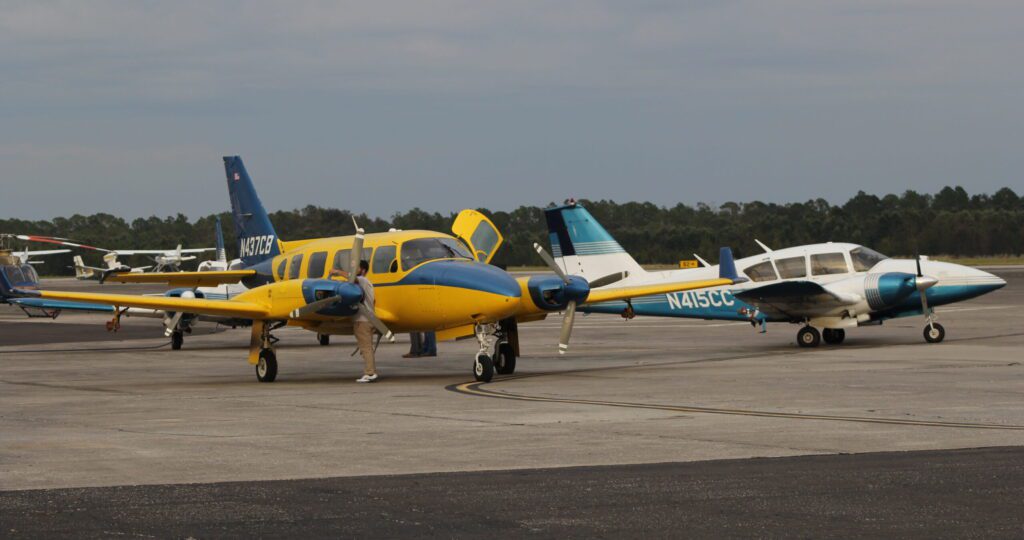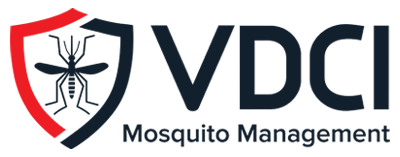Emergency Response Mosquito Control Preparation
The need for comprehensive emergency response planning has never been more critical. In an era marked by increasingly unpredictable natural disasters, from hurricanes and major flooding events to wildfires, preparedness has become the cornerstone of successful emergency response. For example, after a landfalling hurricane, mosquito populations can skyrocket due to extensive standing water left from flooding and warm temperatures. The planning process can be complex and must be tailored to the unique needs, budget, and location of the state or municipality to ensure government leaders can initiate a well-coordinated response when emergencies arise.
Early Stages of Emergency Planning
Effective emergency response planning starts with identifying key points of contact and securing funding sources. In this phase, various agencies at local and federal levels collaborate to establish a vital cohesive network of communication. Experienced vector control companies like VDCI can help facilitate this process by establishing effective communication protocols, and can also play a vital role in public awareness campaigns, educating the community, and supporting agencies in crisis management.

Action Thresholds and Predictive Science
Establishing action thresholds is another crucial part of the planning process. By determining acceptable mosquito levels and specific markers to initiate intervention mosquito control strategies, stakeholders can help maximize and leverage funding, reduce unnecessary insecticide use, and prevent insecticide resistance.
In some cases, emergency response planning may also involve predictive science. Meteorological predictions based on forecasting and historical weather data can help professionals develop preemptive response strategies. This helps communities stay vigilant and prepared, particularly in anticipation of natural disasters.
Predictive Modeling and Regional Considerations
Experts may also use a methodological approach to forecast mosquito population dynamics and potential disease outbreaks. For example, predictive mosquito modeling has been used to accurately forecast St. Louis encephalitis outbreaks by evaluating precipitation, temperature, and bird migrations. Birds play a notable role in the transmission of mosquito-borne diseases, and their nesting behaviors can influence the potential for disease outbreaks.
While coastal regions are frequently in the spotlight for hurricane preparedness, it’s crucial to recognize that emergency response plans should extend far beyond these areas. Inland regions are also vulnerable to natural disasters, making tailored plans for different scenarios essential. Heavy precipitation in California serves as a stark example. In 2023, the state experienced record-breaking rainfall, leading to fertile breeding grounds for disease-carrying mosquitoes.
Adapting Plans for Various Regions
This showcases the far-reaching consequences of natural disasters and the need for adaptable plans to apply across different regions. Nonetheless, in most cases, emergency preparation involves detailed mapping of a region’s physical attributes to determine which areas are most susceptible to becoming mosquito breeding grounds and to identify potential accessibility challenges. Utilizing specialized traps, laboratory tests, and advanced technology like drones, experts can also monitor mosquito activity and population dynamics. This data informs decision-making during emergencies.
Equipment Preparedness and Post-Disaster Surveillance

Additionally, storm progress will be closely monitored and all equipment, including trucks, aircraft, drones, and Ultra Low-Volume (ULV) pesticide applicators, will be maintained and prepared for deployment once authorization has been granted. Aircraft pilots can treat up to 30,000 acres in a single evening, and ground crews can cover approximately 3,000 acres in areas where aerial applications may not be suitable, such as ecologically sensitive habitats or residential communities.
Once emergency conditions have subsided, professionals will resume mosquito surveillance and laboratory analyses to confirm that mosquito populations have been effectively managed – with the ultimate goal of safeguarding the public and supporting relief workers as they work to restore power, clean roads, manage flooding, repair infrastructure, and aid injured and displaced citizens. The collected data is then shared with relevant authorities and stakeholders to ensure that all objectives are achieved.
Be Proactive and Prepared with An Emergency Response Plan
As we look ahead to 2024 and beyond, it’s important to remember that natural disasters and disease outbreaks are bound by few geographical boundaries. This reinforces the need for proactive planning through communication, forecasting, and data collection. If your community does not have an emergency response plan in place, contact us to learn how VDCI can help you prepare for the unexpected.
Contact Us to Build Your Mosquito Management Program:
 Since 1992, Vector Disease Control International (VDCI) has taken pride in providing municipalities, mosquito abatement districts, industrial sites, planned communities, homeowners associations, and golf courses with the tools they need to run effective mosquito control programs. We are determined to protect the public health of the communities in which we operate. Our mosquito control professionals have over 100 years of combined experience in the field of public health, specifically vector disease control. We strive to provide the most effective and scientifically sound mosquito surveillance and control programs possible based on an Integrated Mosquito Management approach recommended by the American Mosquito Control Association (AMCA) and Centers for Disease Control and Prevention (CDC). VDCI is the only company in the country that can manage all aspects of an integrated mosquito management program, from surveillance to disease testing to aerial application in emergency situations.
Since 1992, Vector Disease Control International (VDCI) has taken pride in providing municipalities, mosquito abatement districts, industrial sites, planned communities, homeowners associations, and golf courses with the tools they need to run effective mosquito control programs. We are determined to protect the public health of the communities in which we operate. Our mosquito control professionals have over 100 years of combined experience in the field of public health, specifically vector disease control. We strive to provide the most effective and scientifically sound mosquito surveillance and control programs possible based on an Integrated Mosquito Management approach recommended by the American Mosquito Control Association (AMCA) and Centers for Disease Control and Prevention (CDC). VDCI is the only company in the country that can manage all aspects of an integrated mosquito management program, from surveillance to disease testing to aerial application in emergency situations.

